Sunset Boulevard is usually studied in the Australian curriculum under Text Response. For a detailed guide on Text Response, check out our Ultimate Guide to VCE Text Response.
Introduction
Film is art. And, art serves as a mirror that is a reflection of us as a society. Thus, a major function of art is to show society as it truly is - even if the image itself is unflattering.
A film d’auteur; Sunset Boulevard portrays Billy Wilder’s (director) unique artistic personality. Through his cinematic choices, variety of individualistic styles and the use of innovative features (which we will be exploring in this blog) it is evident that Wilder exhibits the world of Hollywood in a very different and even ominous light to what was normally showcased in the 1950s.
We will now delve into Wilder’s world of film art and gain an insight into how he viewed the industry of Hollywood through his camera.
Note: There will be some sophisticated vocabulary used throughout the blog, so please refer to the glossary (at the end) or the bracketed definitions for the meanings of words that are bolded.
The Golden Era of Cinema
The 1950s Pax Americana social zeitgeist revealed an era in film where any social criticisms of the time were hidden behind the red velvet curtains and silver screens of Hollywood. In this post-war society, disillusionment was very much present within the American psyche. The dawn of the Cold War saw the rise of looming atomic threats, class wars, McCarthyism, spies and infiltrations burgeoning public fears and social paranoia.
Thus, cinema itself became a form of escapism from the bleak and depressing real world; crafting an illusion of reality where the line between the American dream and reality was deviously blurred.
Yet even such a glamorous industry could not conceal the moral ambiguities of the era. To what was originally a light-hearted comedy film, this cynical film noir is a Hollywood-on-Hollywood story that is far from an entertaining vaudeville act for the masses. Through the wide range of cinematic auteurist techniques that Billy Wilder utilises within the film, he portrays a dark edge to the folie de grandeur of Hollywood and its illusions.
Hence, while it’s essential that you use standard techniques like camerawork and editing (as it is a motion picture), it would further elevate your analysis if you interspersed a diverse range of cinematic features into your essay including features like sound, costuming, colour/spatial composition and broader themes which relate to the social context of that time. This is because it is important to notice that everything the director uses in the film is there for a reason.
If you would like to see more on camerawork and editing, you can refer to our Analysis of Film Techniques in Sunset Boulevard blog post.
Film Noir & German Expressionism
The Golden Age of Hollywood was a time when synchronous sounds and colour films were commonplace.
So, why did Wilder use black and white colour composition?
Perhaps it was to pay homage to the previous era of silent film or it was just another mordant elegy to those decades. Either way, the truth lies within film noir.
Film noir (French for ‘Dark film’) is a style of film with dark and pessimistic/cynical moods evoked through visual compositing using chiaroscuro (low-key lighting). It is perhaps one of the most important cinematic features used in Sunset Boulevard as it conveys an emotion and atmosphere within the film which cannot be done through scripted words or actions.
Through the restrictions of the Hays Code (a set of guidelines censoring what could be shown on screen), film producers were unable to easily question the moral codes and regulations of society. However, by using film noir, Wilder was subtly able to employ innuendos, double entendres and wit to satirise the dark underbelly of Hollywood and the underlying obsession with stardom exhibitionism and fame.
While the burlesque American musicals and Western comedies reflected an illusionary reality for movie audiences of that time, the convoluted storylines/plots of film noir mysteries and thrillers reflected the complexities and hidden moral intransigence of society. More importantly, the characters aren’t the ones who resolve the mystery but instead the audiences themselves.
Common Features of Film Noir Incorporated Within Sunset Boulevard:
- Anti-hero protagonists: characters who lack a moral centre and turn to corruption, like Joe Gillis who embodies a bitter, hard-boiled and cynical character who has deep flaws. Although he is confronted with the fact that the pursuit of the Hollywood dream is neverending, when he ends up at Norma’s garage he gives into her fantasies and forms his own tragedy.
- Femme-fatale: ‘deadly woman’ who is manipulative using her femininity and sexual allure for her own goals. Norma Desmond upholds this sort of archetype as she entraps Joe Gillis as her editor for her Salome script, so she can make her “comeback”.
- Location: Usually shot in New York or Los Angeles (like this film), revealing a city with a glamorous facade and a gritty underworld of lush morbidity and moral ambiguities.
- Lighting: Stark/harsh while creating effective shadows which usually shroud the characters. Dark shadows and chiaroscuro lighting within Norma’s mansion emphasise her haunted nature as she is stuck in the dark of the past, unable to see the light of the outside world.
- Narration: Has a pessimistic and cynical undertone. The third-person omnipresent narration is from the ghost of Joe Gillis himself; witnessing his own murder, calling the dead man a ‘poor dope’ when in hindsight it is his past self whom he critiques.
- Colour: The use of a monochromatic colour scheme (black and white) is the main idea of film noir, eliciting a feeling of the past.
- Use of flashbacks: At the beginning of this circular narrative, we are confronted with the present (which actually is the denouement - the murder); however, through the flashback in Joe’s perspective, we start from the beginning (the past) and travel through time to the present. The past and the present become one.
German Expressionism (containing Gothic themes) is used in tandem with film noir. Originating in the late 1940s, the depressing aftermath of a post-WWII society had left a pervading sense of doom and dejection, striking a chord with those disillusioned throughout Europe. As a nod to the genre of Gothic Horror, Expressionism draws upon elements and symbolisms prevalent within horror stories such as Dracula.
As seen in Sunset Boulevard, Norma lives in a dilapidated mansion that mimics an archetypal haunted mausoleum; depicting her as a character from a horror story.
Long shadows stretch eerily throughout vast dark hallways.
A tall windy staircase, symbolic of the time portal she is stuck in.
Curtains always almost fully drawn.
Nösferatu-like candelabras swaying in the dim light.
A funeral for a dead monkey corpse.
Such filmic elements all add to the personality of Norma’s character - as an arch-ghost of the story from the buried past.
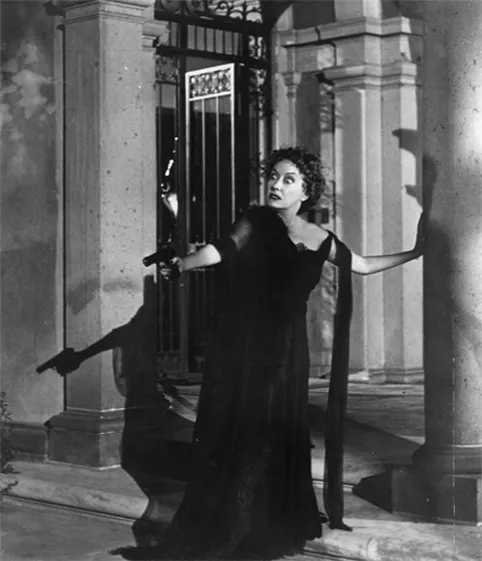
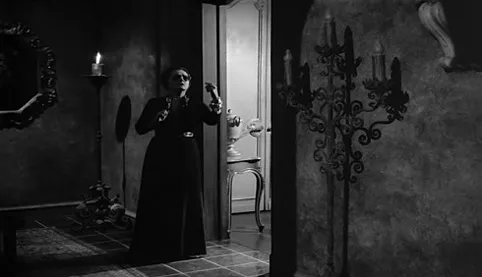
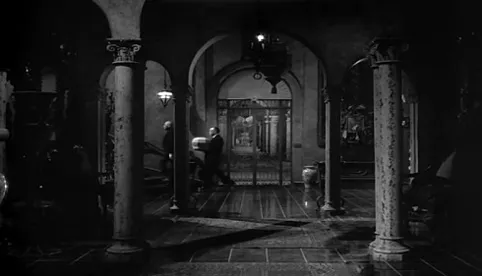
While not every aspect of film noir and Expressionism will be relevant when you are writing for your given essay topic, it is important to try to occasionally refer to them wherever you can in your writing just like the example below:
There is a dissonant tension in the mansion, referred to as the ‘grim Sunset mansion’; it works as a metaphor to the fatalistic and tragic meaning of Hollywood’s own dangerous veneer which forever traps victims within their glorious ‘heydays’ after rejecting them into its gutter. The Expressionist horror accompaniment of chiaroscuro in tandem with the mise-en-scene of the ‘ghost of a tennis court’ and an empty swimming pool, all shadow the haunting ‘paralysis’ of Norma’s own faded dreams. While obliviously sitting enclosed by her shrine of photographs, ‘crowded with Norma Desmonds', Norma eventually becomes a prisoner of a carefully curated exhibit that Hollywood had set up, as she is seen signing headshots for fans, and eerily impersonating the performers of a bygone Hollywood.
Sound & Music in Sunset Boulevard
Sound and music in film create a specific atmosphere and mood which can sometimes be unattainable in the visuals of a black-and-white film like Sunset Boulevard. Thus, sound and music both play a vital role in the film by heightening mood and emotional responses from characters, foreshadowing narrative developments and placing emphasis and attention on certain actions and events.
Franz Waxman’s (Sunset Boulevard’s musical producer) music score morphs together variations of musical cues, composition styles and repetitive thematic notes. He stated that he had to enter and understand the characters’ minds to write their music.
‘Film music is heard only once—not many times as concert music is. […] It should have simplicity and directness. It must make its point immediately and strongly. The emotional impact must come all at once.’ - Waxman
Hence, Waxman constructed leitmotifs as a representation of the main characters and the time in which they live. Below are some examples of the musical leitmotifs he uses:
- Norma’s theme - she receives a classical 1920s off-kilter tango during her dancing scene where she is stuck in the past dwelling on her heydays when she met Rudolph Valentino at parties. However, her musical motif mostly represents her declining state of mind emoted by solo alto flute mysterioso and low and pulsating string notes.
- Joe’s theme is characterised by bebop, (jazz-style music for the 1950s urbanite youth) conveying his nonchalant and breezy attitude with prominent saxophonic tunes.
- Love theme between Betty and Joe - being played as the pair are working away on their own script in a deserted studio and when they take a stroll through the studio backlot; the music accompaniment is a tender and lyrical string line, with a muted solo trumpet.
From the onset of the film, the large orchestral brass-led sound gradually becomes the central theme of the film as it dramatises the initial rush of the homicide squad and newspapermen.
Below is an example of how you might talk about how the music aids the tensions of the scene:
Waxman’s melodramatic and foreboding minor score establishes a sense of impending peril, while the allargando (broadening) of the brass sections heightens the initial tensions of the film. The underlying vibrato of the strings is unnerving and uncomfortable, as it acts in coalescence with the diegetic sound of the blaring sirens which echoes an eerie and unsettling tone.
Note: Waxman’s music score is a non-diegetic sound (coming from outside of the film world), while the sirens blaring is a diegetic sound (coming from within the world of the movie).
There is a range of diegetic sound that comes from within the world of the film that you may hear as you are watching the movie. For example:
- Joe’s typewriter when we witness the serpentine glide of the camera into his exposed room
- The camera flashes in the opening scene and the loud and abrupt car noises from the car chase scene
- The telephone ringing as Max calls Joe at the party
- The band playing tango music during Norma and Joe’s dancing scene
Furthermore, musical repetition is also very common within the film as some themes are repeated but transformed or altered musically to convey a contrasting mood. For example, in the scene where Joe tries to flee from Norma but Norma eventually murders him; the music being played is a tortured, slow-motion version of the opening car chase theme. Hence, the musical repetition of Joe’s opening car chase theme signifies how it foreshadows the tragic ending that he faces as he continues to chase the unattainable dream of Hollywood.
Another example is when Norma prepares for her ending close-up and she descends the staircase into a complete state of megalomania - the music shares the harmony of the tango theme but is transformed into a distorted parody. Through the bombardment of notes, alternation of tremolos (reiteration of notes) and the use of dramatic chromaticism (interspersing of obscure chords) it represents the dramatic changes in emotion and the deterioration of Norma’s mental sanity in the finale.
Costuming & Appearance in Sunset Boulevard
In contrast to a multicoloured film which can showcase a variety of decorative aspects within the setting and characters, creating a black-and-white film has its drawbacks. Especially with a vibrant and overly-decorous character like Norma Desmond, the production cast needed to go the extra mile with costuming to provide a clear visual portrayal of different moods, impressions, influences and the backgrounds of characters.
Edith Head’s (Sunset Boulevard’s costume designer) costuming in the film plays an integral part in building characterisation and forming a clear contrast between the character personas.
‘For black and white picture you must have more of everything’ - Head
If we take a look at Norma Desmond’s clothing, hers reflects the Byzantine indulgences of the silent era. The garish avalanche of accessories, oversized jewellery and the prominence of fur and peacock feathers are typical of silent era glamour. It also aligns with the gaudy decorations and art nouveau of the interior of her mansion, representative of her conspicuous wealth.
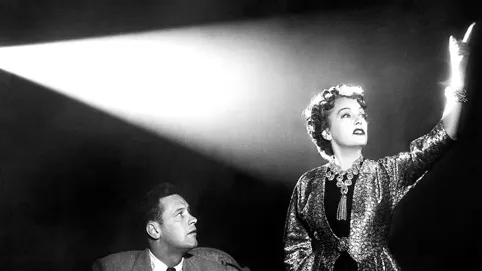
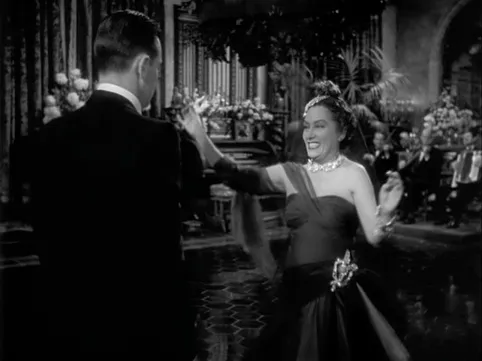
Norma also embodies a vampiric character which Head portrays through Norma’s hair concealed under a turban; her large, dark glasses; her dark, silk clothing and her long, looser silhouette gowns (emblematic of the antiquity of the 1920s). Norma’s showy indulgence in her decorative wealth and clothing is not only emblematic of her persona but is also portrayed through her over-dramatised theatrical gesticulations which accompany and further give insight to her deranged state.
The recurring motif of the leopard print (on her turban, her gowns and on her automobile), becomes significant, as Head purposefully uses this print to symbolise Norma’s predatory nature - Norma entraps and uses others like puppets for her selfish motives. The leopard print is portrayed mainly when she is with Joe, representing the way she has him like a ‘monkey dancing for [her] pennies’.
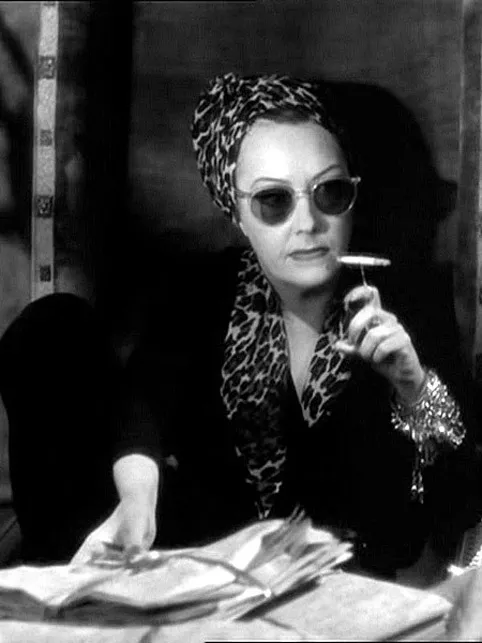
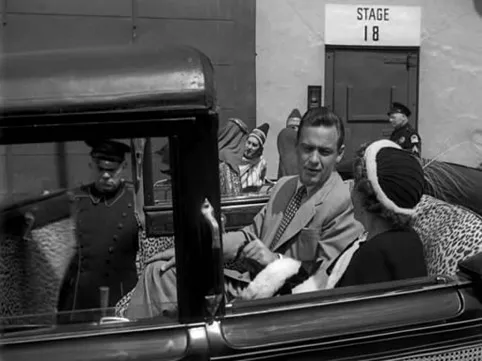

On the other hand, Betty completely contrasts in her appearance and her attire. Her simple wardrobe consists mainly of dull suits, coats and skirts. With clothing that is less garish and having higher, modest necklines with neat, simple makeup and hair and with very little jewellery or fabric embellishments, Head not only portrays Betty’s young age but also her modesty and innocence.
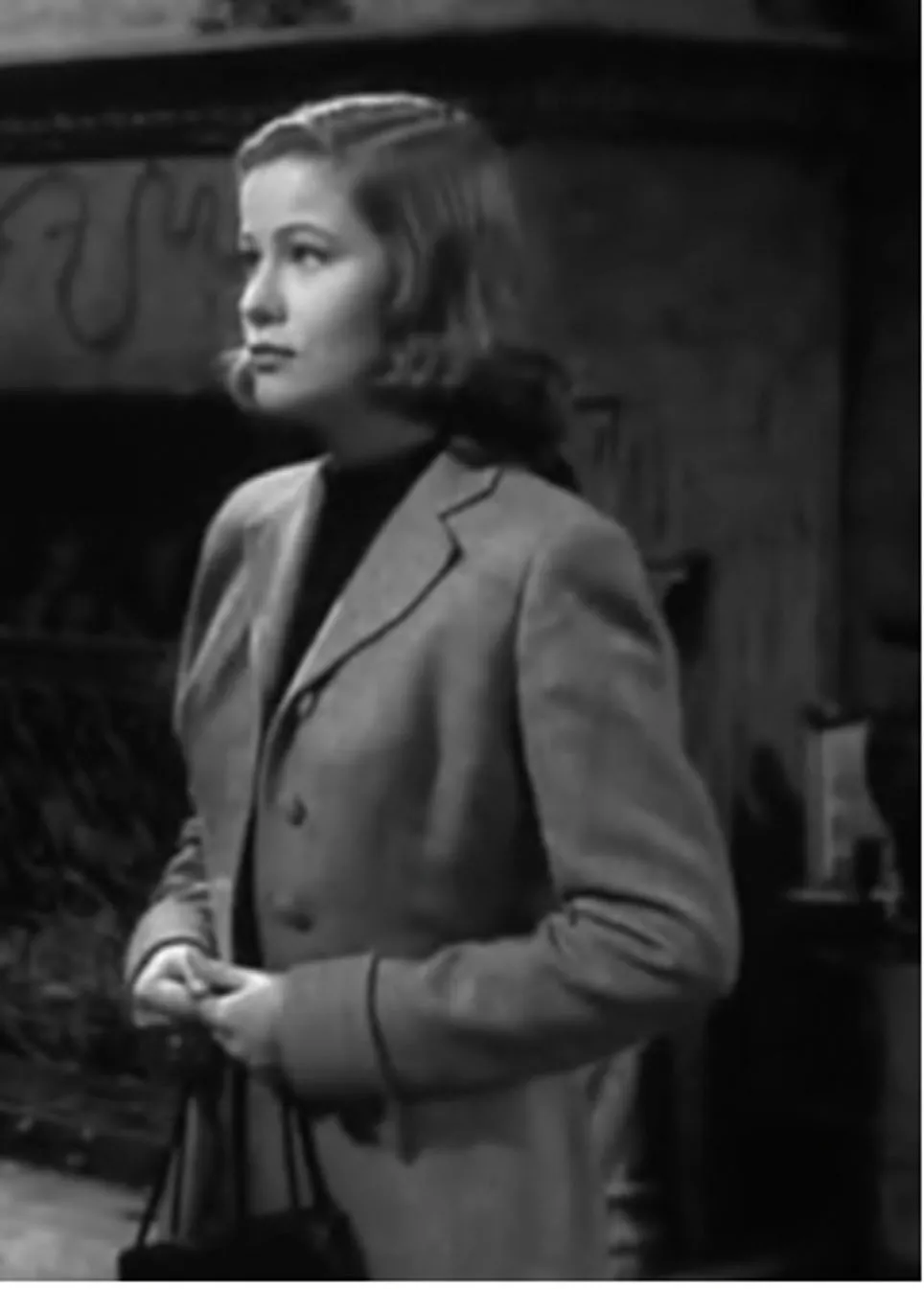
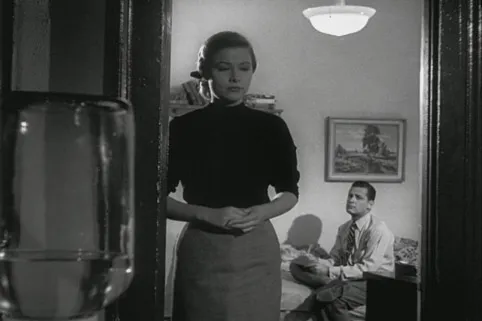
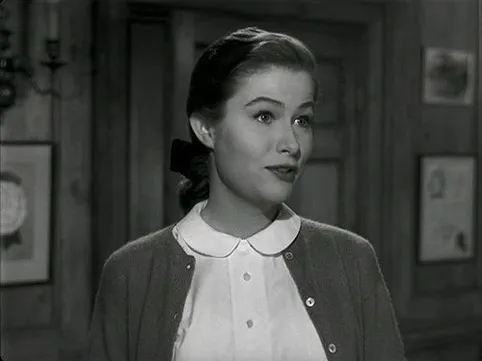
Joe’s wardrobe deliberately changes throughout the film. Early on in the film, he is seen jobless, trying to make ends meet, wearing a flimsy, ill-fitting jacket and baggy trousers seemingly cut from an early bolt of polyester. After meeting, Norma complains about Joe’s style and takes him on a shopping spree to the best tailor in Hollywood, loading him up with well-tailored suits, six dozen shirts and a masculine (vicuna) overcoat that emphasises his build. He is also accessorised with custom-made shoes, cufflinks, watches, a gold cigarette case and a platinum key chain. While Joe’s fancy wardrobe symbolises new wealth, it’s not his own, but Norma’s. His monetary dependence on Norma leaves him helpless and humiliated when the salesman at the tailor insultingly adds ‘as long as the lady’s paying for it’. With the continual allusions to men’s clothing rather than women’s throughout the film, Joe becomes the one objectified as an object of Norma’s ownership. The contrast between Joe and Norma’s wardrobes shows the clear power imbalance between them, and thus, an overturn in gender norms.

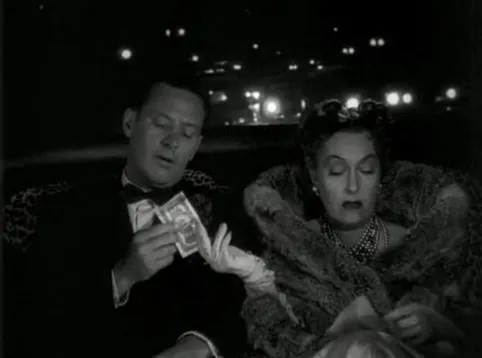
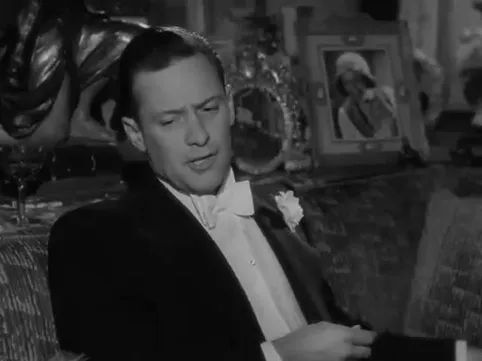
The Legacy of an Eerily Timeless Film
Within the industry of Hollywood - whether in front of or behind the cameras - writers, producers, agents and stars (new and former) collectively are all victims of an exploitative and ruthless industry running on schadenfreude (thriving on individuals' misfortune).
Whether it’s Betty’s tale of rejection, Joe’s ‘lack’ of writing talent or Norma’s long-forgotten time of fame, Sunset Boulevard unveils the perils of unbridled star adulation, the pursuit of fame and celebrity culture.
Whilst adopting auteurist principles, director Wilder paints a truthful and grotesque self-portrait of Hollywood’s true face, highlighting the ephemeral nature of an industry’s sickening star system; one that creates and exults stars and just as quickly forgets them.
Through this seminal cautionary tale, Wilder seeks to confront a timeless audience with the intoxicating culture of the screens which has become a common reality nowadays and saturates many of modern-day social spheres.
Sunset Boulevard ultimately poses a warning to the audience of a much wider cultural disturbance of Hollywood’s addiction to the vanity of celebrity fame, excessive media consumption and the obsession of ‘needing to be seen’ - a warning which reverberates louder than ever within modern society today.
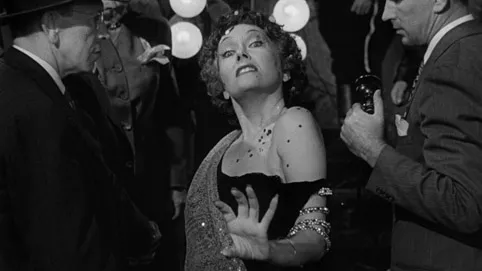
Glossary
Arch-ghost: main ghost-like character (like in a horror film).
Auteurist: (used for film directors) having a distinctive artistic style in their films.
Burgeoning: starting to increase or grow (rapidly).
Byzantine: clothing and accessories that are richly patterned and coloured, yet conservative originating from olden-day Istanbul.
Chiaroscuro: low-key lighting which produces an effect that contrasts light and shadow in black-and-white films.
Denouement: the finale/ending of the story arc, where conflicts and matters are revealed and resolved.
Elegy: a poem that mourns the loss of something (the loss of the silent era in this case).
Film D’auteur: a film that reflects the artistic personality of the film director/screenwriter.
Foile de grandeur: delusions of grandeur.
Intransigence: refusal to change one’s views and agree on a different reality.
Leitmotifs: A recurrent theme/motif throughout a musical/literary composition.
Megalomania: extreme state of delusional obsession with grandeur and of oneself.
Nösferatu-like: (Dracula-like), synonymous with vampire.
Pax Americana social zeitgeist: the state of national prosperity in American Society after WWII.
Redolence: strongly emblematic or nostalgic.
Solo alto flute mysterioso: Solo flute played in a lower key that is guided to be played to evoke a mysterious mood.
Synchronous sounds: Audio coming from the screen that lines up with what is shown on the screen.
Urbanite: someone who dwells/lives in the city or enjoys an urban city lifestyle.
Vaudeville: light musicals or entertainment acts popular in the 1900s, usually serving only a comedic or entertaining purpose.





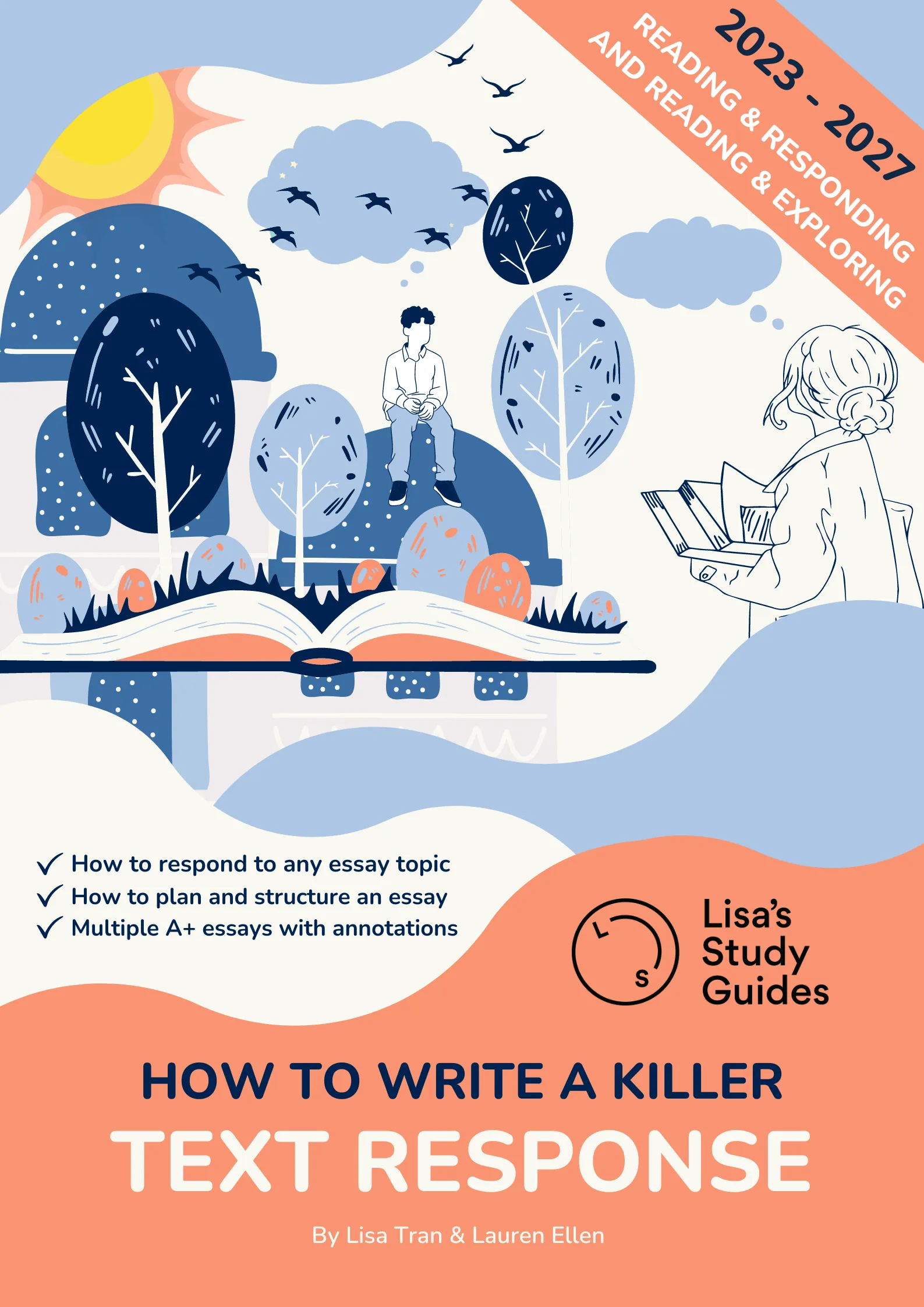
.webp)
.webp)
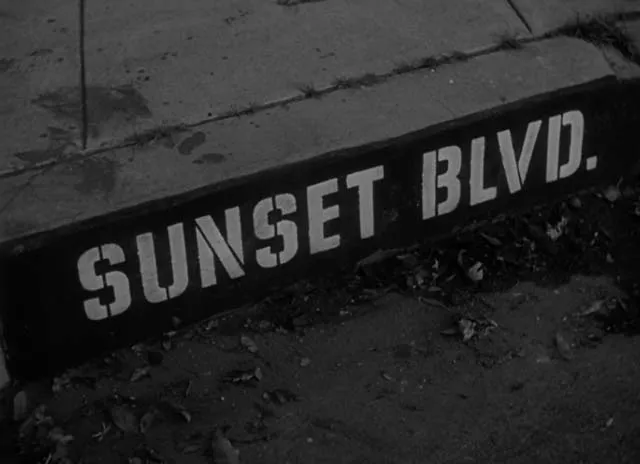
.webp)
.webp)
.webp)
.webp)
.webp)
.webp)
.webp)
.webp)
.webp)

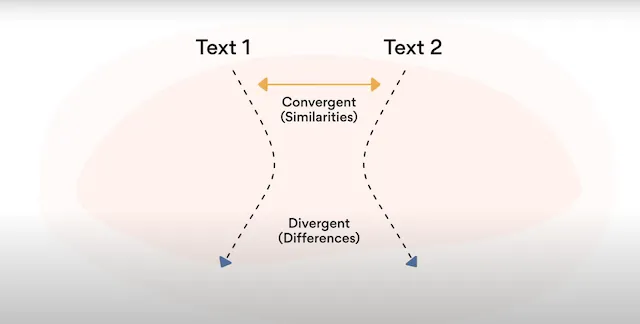
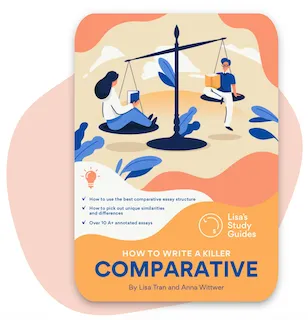

.jpg)